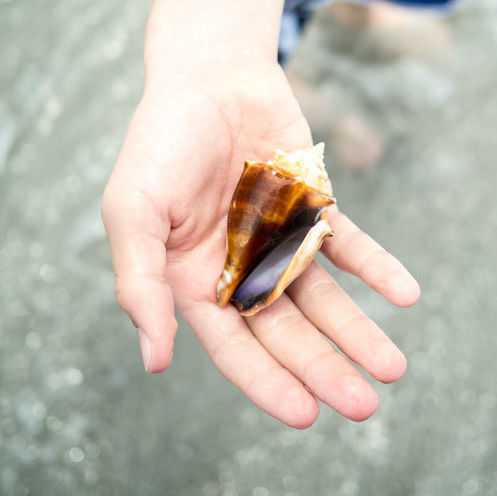Danger Averted!

Dmitry Saparov / Shutterstock
Jaws and the annual couch-potato horror fest that is the Discovery Channel’s Shark Week have terrified multiple generations of Gulf Coast swimmers, but you have a better chance of winning the lottery than getting chomped in Texas waters. Which is not to say that you can throw caution to the sea breeze when you are at the beach. Below you’ll find the most common hazards of a day at the beach, along with their solutions.
Rip currents
While drowning can occur in even shallow, calm waters, some areas are deadlier than others. Rip currents are “the most dangerous aspect of coastal Texas,” according to Tony Reisinger, a Rio Grande Valley-based marine expert with the Texas Sea Grant. The currents occur when too much water is pushed to the beach too fast. “It has to go out somehow,” he says. “It makes a cut and goes offshore. Getting caught in one is like getting caught in a flowing river.”
Solution: Avoid swimming near jetties, piers or areas close to the end of an island. And if you do find yourself in a rip current?“Swim parallel to the beach in either direction and don’t fight it,” Reisinger says. “That’s the main thing.”
It’s always safest to swim under the gaze of a lifeguard, and it’s important to learn the flag system: Yellow is flown under normal conditions. Red flags signal strong winds, strong currents, or large surf. Should a near-drowning occur, turn the swimmer on his or her side, call an ambulance, administer mouth-to-mouth, and shade and reassure the victim.
Toxic marine life
Blue flags indicate an unusual prevalence of jellyfish, Portuguese man o’ wars, or stingrays. You should stay out of the water on blue-flag beaches, but on regular beach days you’re still not immune to a sting. Unfortunately, these creatures like to visit our coastline in the summertime as much as we do, according to Kristopher Benson, a Galveston-based marine resource specialist with the National Oceanic and Atmospheric Administration. He says that rays are more active in shallow waters in the summertime.
Solution: The “stingray shuffle”: walk through the water without lifting your feet, kicking up as much sand as possible. The shy rays will flee. If you’re stung anyway, use hot water and meat tenderizer (keep some in your beach bag) and call a doctor.
To treat jelly stings, first use a towel to gingerly remove the tentacle. Then, to ease pain, pour on rubbing alcohol (another beach bag necessity). Next, apply a poultice of pasted meat tenderizer, and then antibacterial cream.
And remember, resist the urge to stomp or pop dead man o’wars, tempting as that might be. Even in death their stings are fierce.
Sargassum grass
While it’s not dangerous, Texas beaches are, at times, littered with this often stinky, rather unpleasant seaweed.
Solution: Deal. While beachgoers regard it as a nuisance and wonder why more is not done to remove it, biologists praise its beach-building properties. It’s also a welcome habitat for tiny shore creatures. Sargassum is life.













